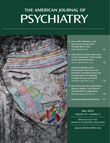Understanding Body Dysmorphic Disorder is an excellent resource to recommend to patients with this complex and challenging disorder and their families. Dr. Phillips skillfully describes the phenomenology and treatment options for body dysmorphic disorder, using case vignettes to illustrate the profound impact this disease can have on the daily life and self-esteem of those affected. Using an engaging style, she provides detailed explanatory information for an educated reader. Patients are likely to feel relieved, understood, and less isolated by reading this book, as it draws on the author's own wealth of clinical and research experience.
Phillips provides case vignettes at the outset, conveying that body dysmorphic disorder is a real disease rather than a result of vanity or superficial obsessive thoughts. Her chapters "What Is Body Dysmorphic Disorder?" and "How Do I Know If I Have Body Dysmorphic Disorder?" explain the phenomenology, differential diagnoses, and comorbid conditions for the disease. One table delineates the common diagnoses mistaken for body dysmorphic disorder. Another one lists the percentage of patients who have perceived defects in each of 39 different body parts. Body dysmorphic disorder can affect literally every body part, although skin and hair are most often involved in symptoms. The chapters categorizing the symptoms into different forms of the disorder and into obsessions and compulsions, along with the chapter on the impact on those affected, make the rich array of symptoms and the shame of having them quite apparent. They foster understanding and compassion for those suffering with the disease.
In the chapters on treatment, Phillips provides extensive explanation of medication treatments and cognitive-behavioral therapy. While she should be applauded for her attempt to enlighten and perhaps empower the reader to fully understand treatment options, the degree of detail in this section may overwhelm the reader, making it difficult to discern which points are the most relevant. For example, in the chapter on medication, Phillips not only explains serotonin reuptake inhibitors but also lists their typical dosage range, comments on efficacy studies, and discusses augmentation options, dosage, and standard deviations. The score ranges of responders and nonresponders on the body dysmorphic disorder version of the Yale–Brown Obsessive Compulsive Scale are another example of unnecessary detail that clouds the most relevant points for the reader. The section on treatment algorithms is an example of fairly detailed information more typical for texts for clinicians although it does provide hope for the reader who is not responding to a treatment. Similarly, the chapter on cognitive-behavioral therapy provides a useful description on the treatment and studies supporting its use. The subsequent details of conducting a cognitive-behavioral treatment are more relevant for a psychiatric resident learning how to conduct the treatment than a patient learning about treatment options. In fact, the amount of psychiatric detail found throughout the book is at times so far beyond the knowledge base of most lay readers that it is augmented by a lengthy glossary at the end of the book. The reader could become distracted by these terms and definitions, although they are necessary to maintain the level of sophisticated explanation offered throughout the book. The final chapters for families and friends and on getting help are practical and worthwhile.
Despite these minor issues, Understanding Body Dysmorphic Disorder is an engaging, practical, informative, and worthwhile book to recommend to patients and even to beginning trainees in the health profession. Any reader will come away with a much greater understanding of this little-known disease.

